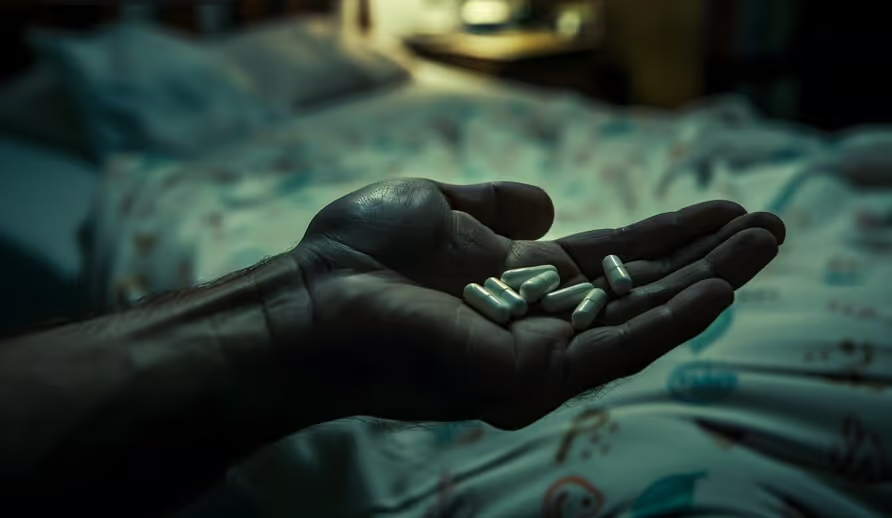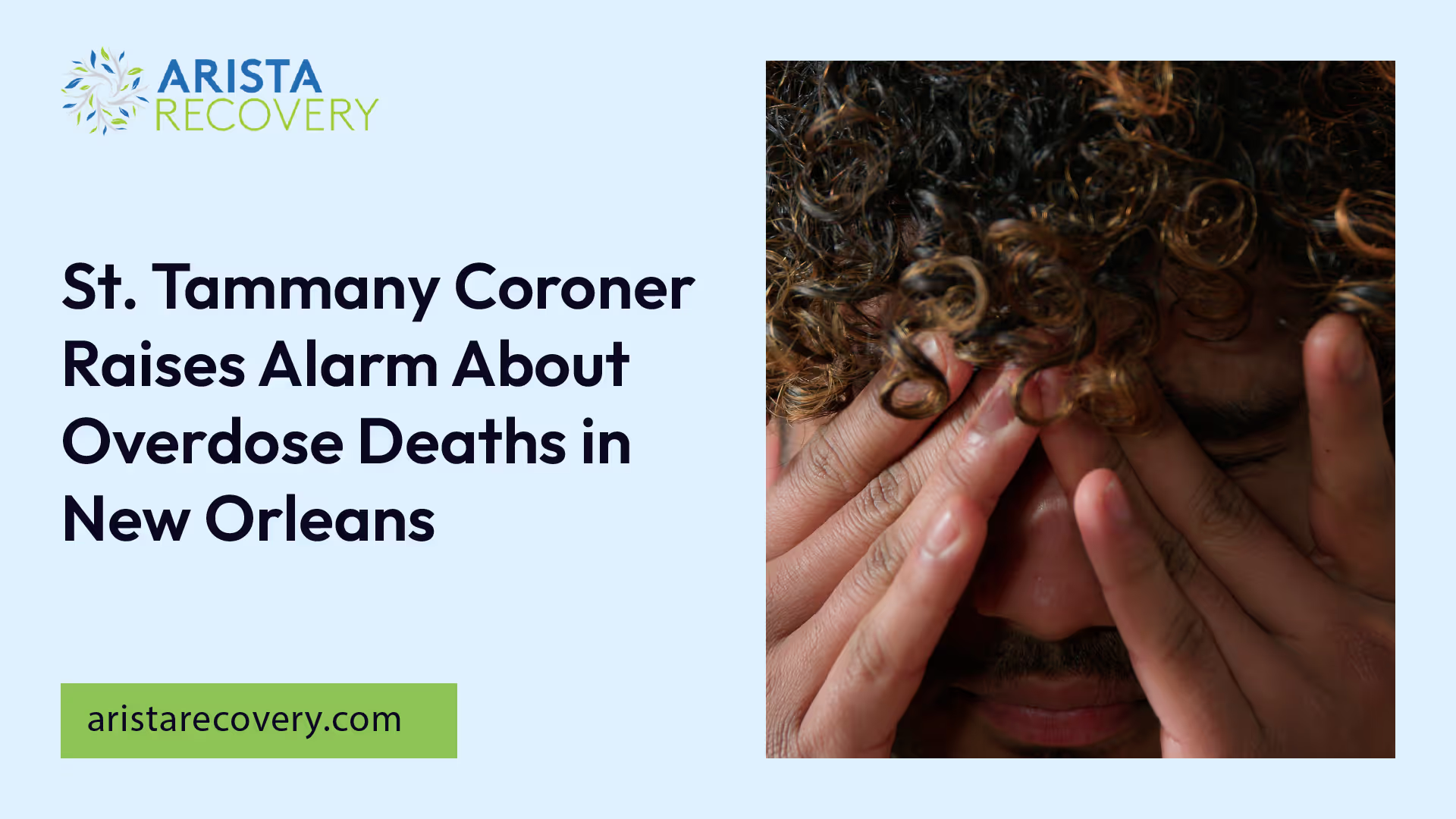St. Tammany Coroner Raises Alarm About Overdose Deaths in New Orleans

Overdose Deaths in the US
In the United States, drug overdose deaths have been on an alarming rise, reaching pandemic proportions and causing grave concern across all states. This section will delve into the trends in overdose deaths and the profound impact they have on individuals, families, and communities.

Trends in Overdose Deaths
In 2021, 106,699 drug overdose deaths occurred in the United States, with an age-adjusted rate of overdose deaths increasing by 14% from 2020 to 2021 (28.3 per 100,000 to 32.4 per 100,000). This marked a record high, surpassing the previous peak of 93,331 deaths in 2020 [2].
The number of deaths involving synthetic opioids other than methadone (primarily fentanyl) was 70,601, while those involving stimulants, including cocaine or methamphetamine, totaled 32,537 [3].
The number of overdose deaths involving any opioid rose from 21,089 in 2010 to 80,411 in 2021. Deaths involving prescription opioids specifically rose from 3,442 in 1999 to 16,706 in 2021. However, overdose deaths involving heroin increased to 15,482 in 2017, then declined to 9,173 in 2021. Deaths involving psychostimulants with abuse potential (primarily methamphetamine) rose from 547 in 1999 to 32,537 in 2021 [3].
Impact of Overdoses
The impact of drug overdoses goes beyond the staggering death toll. They exact a heavy toll on the health and wellbeing of individuals, families, and communities. Overdoses strain emergency medical services, contribute to high healthcare costs, and lead to lost productivity.
Moreover, the emotional toll on families and communities is immeasurable. The loss of a loved one to overdose can lead to profound grief, stress, and trauma. The ripple effects of these deaths can also contribute to a range of social problems, including increased rates of mental health disorders, child neglect or abuse, and homelessness.
The rising number of overdose deaths in the US underscores the critical need for comprehensive, effective strategies to prevent and treat substance abuse and addiction. As the situation escalates, it is crucial for health authorities, policymakers, and communities to come together to address this public health crisis.
Overdose Crisis in Louisiana
The state of Louisiana is grappling with a significant overdose crisis, with rising numbers of overdose deaths being recorded each year.
Louisiana's Overdose Statistics
In 2021, Louisiana recorded nearly 2,463 overdose deaths, marking a concerning rise in the overdose death rate. This figure signals a drastic increase from the 98 opioid-related deaths recorded in 2015. The state's overdose death rate stands at 55.9 per 100,000 people, which is nearly double the national average.
The DEA reports a total of 2,711 drug-involved deaths in Louisiana in 2021, which includes 1,177 synthetic opioid poisoning deaths and 927 stimulant-involved deaths. These figures underscore the critical nature of the overdose crisis in Louisiana.
Fentanyl's Role in Overdoses
Fentanyl, a potent synthetic opioid, has been a significant contributor to the overdose crisis in Louisiana. It accounts for up to 95% of all overdose deaths in the state [4]. The city of New Orleans, in particular, has witnessed a surge in incidents involving fentanyl, leading to the St. Tammany Coroner raising the alarm about the situation.
Among the incidents in New Orleans, 353 were suspected fatal overdoses, and 2,502 were nonfatal overdoses. The prevalence of fentanyl in overdose cases is a significant concern, given the drug's potency and the associated risks.
The rising overdose statistics in Louisiana, particularly in New Orleans, highlight the urgency for action to address this crisis. Initiatives at the local and state level, community partnerships, and public awareness campaigns are crucial in steering the state away from the current overdose crisis.
St. Tammany Coroner's Concerns
The rising tide of overdose deaths has not gone unnoticed by the St. Tammany Coroner's Office. The coroner has expressed serious concerns about the alarming rate of overdose deaths, particularly in New Orleans, and has emphasized the urgency of the situation.
Alarming Rate of Overdose Deaths
The data on overdose deaths in Louisiana, and specifically in New Orleans, paints a grim picture. In 2021, Louisiana recorded nearly 2,463 overdose deaths, with fentanyl accounting for up to 95% of all overdose deaths. The state's overdose death rate of 55.9 per 100,000 is nearly double the national average.
In just the first three months of 2017, there were 166 suspected overdoses and 41 confirmed deaths in New Orleans. The number of opioid-related deaths in Louisiana increased by 200%, from 98 in 2015 to 361 in 2016.
These numbers highlight the scale and severity of the overdose crisis in New Orleans and underscore the urgency of the St. Tammany Coroner's concerns.
Urgency for Action
The St. Tammany Coroner's Office has stressed the need for immediate action to curb the escalating overdose crisis. The office has conducted a thorough analysis of the rising overdose deaths in New Orleans, providing valuable insights into this alarming crisis.
The insights from the St. Tammany Coroner's findings have significant implications for public health and demand urgent action. In response to the escalating crisis, the St. Tammany Coroner's Office has implemented various initiatives and collaborated with community partners, including the DEA, to combat the devastating impact of substance abuse and overdose deaths.
The St. Tammany Coroner's Office aims to shed light on this issue and encourage collaborative efforts to prevent further loss of lives. The urgency for action is clear - the alarming rate of overdose deaths in New Orleans calls for immediate and concerted efforts to tackle this public health crisis head-on.
Initiatives and Collaborations
Addressing the issue of overdose deaths in New Orleans, the St. Tammany Parish Coroner's Office has undertaken several initiatives and collaborations with community partners to combat the devastating impact of substance abuse and overdoses.
St. Tammany Coroner's Office Efforts
The St. Tammany Coroner's Office has implemented various strategies to counter the growing overdose crisis. This includes naloxone training and distribution, and the establishment of a Drug Action Team. These efforts aim to provide resources and training to individuals and communities to prevent overdoses and save lives [4].
In response to the alarming rise in overdose deaths in New Orleans, the St. Tammany Coroner's Office has issued an urgent message to the community. The goal is to shed light on this concerning trend and encourage collaborative efforts to prevent further loss of lives [6].
Community Partnerships
Collaboration is key in efforts to address the overdose crisis. The St. Tammany Parish Coroner's Office is listed among the community partners working with the Drug Enforcement Administration (DEA) on drug prevention initiatives in New Orleans. This partnership aims to curb the rising incidence of fatal and nonfatal drug poisonings through targeted education and increased awareness, focusing on predominant drug threats like fentanyl and methamphetamine [5].
These alliances between the St. Tammany Coroner's Office and community partners underscore the necessity of a collaborative approach in dealing with the overdose crisis. By working together, these organizations aim to make a significant impact on reducing overdose deaths in New Orleans and improving the overall health and safety of the community.
Drug Trends in New Orleans
Current drug trends in New Orleans have shown a concerning rise in the presence of dangerous substances and the resultant increase in overdose incidents. The substances in question are primarily fentanyl and xylazine, often mixed with other drugs.
Fentanyl and Xylazine Presence
Fentanyl, a synthetic opioid, has been connected to a large proportion of overdose deaths in Louisiana. In 2021, this powerful drug accounted for up to 95% of all overdose deaths in the state. The presence of fentanyl in counterfeit prescription medications and illicit drugs, such as heroin and cocaine, has significantly amplified the risk of unintentional overdoses.
In addition, a growing concern in New Orleans is the presence of xylazine, an adulterant commonly referred to as "tranq." This substance has been linked to a growing number of overdose deaths in the city and has been detected in mixtures with fentanyl, cocaine, heroin, and other drugs.
Rising Overdose Incidents
New Orleans has seen a worrisome surge in incidents involving fentanyl and xylazine. DEA reports from the city indicate 353 suspected fatal overdoses and 2,502 nonfatal overdoses in 2021.
These alarming statistics have led to the St. Tammany Coroner's Office issuing an urgent message regarding the rise in overdose deaths in New Orleans, raising significant concerns among researchers, educators, and healthcare professionals working to combat the overdose crisis [6].
The rise of fentanyl and xylazine in New Orleans and the resultant increase in overdose incidents underscore the urgency of addressing this public health crisis. Effective prevention strategies, community partnerships, and public health initiatives are needed to combat this dangerous trend and protect the health and well-being of the city's residents. The St. Tammany Coroner's concerns highlight the need for immediate and concerted action to address this growing problem.
Path to Prevention
Addressing the alarming rates of overdose deaths in New Orleans, as raised by the St. Tammany Coroner, requires a multi-pronged approach. This includes implementing effective strategies to combat overdoses and understanding the public health implications of these tragic incidents.
Strategies to Combat Overdoses
The St. Tammany Parish Coroner's Office has already implemented various initiatives and collaborated with community partners to combat the devastating impact of substance abuse and overdose deaths. These measures include naloxone training and distribution and the establishment of a Drug Action Team.
Furthermore, the Coroner's Office is listed as a community partner in the efforts to address the rising incidence of fatal and nonfatal drug poisonings in New Orleans. The collaboration aims to mitigate incidents through targeted education and increased awareness, focusing on predominant drug threats like fentanyl and methamphetamine.
Public Health Implications
The St. Tammany Coroner's findings have significant implications for public health and demand urgent action [6]. Individuals without health insurance, those who have been incarcerated, or those living in poverty are at an increased risk of fatal opioid overdoses.
Moreover, the presence of fentanyl in counterfeit prescription medications and illicit drugs has significantly increased the risk of unintentional overdoses [7].
The following table illustrates the impact of drug-involved deaths in Louisiana:
Data obtained from DEA.
In New Orleans specifically, there were 353 suspected fatal overdoses and 2,502 nonfatal overdoses reported, further highlighting the significant impact of drug-related issues in the area.
The emergence of xylazine, referred to as "tranq," as an adulterant in illicit drug mixtures also contributes to a growing number of overdose deaths.
In conclusion, the St. Tammany Coroner's concerns about the rising incidence of overdose deaths in New Orleans underscore the urgency of implementing effective prevention strategies and understanding the broader public health implications. The alarming trends in drug-related fatalities underscore the need for continued community partnerships and public health interventions to reverse this devastating crisis.
References
[2]: https://www.cdc.gov/nchs/pressroom/sosmap/drug_poisoning_mortality/drug_poisoning.htm
[3]: https://nida.nih.gov/research-topics/trends-statistics/overdose-death-rates
[4]: https://www.legendsrecovery.com/blog/st-tammany-coroner-overdose
[5]: https://www.dea.gov/engage/operation-engage-new-orleans
[8]: https://www.cdc.gov/overdose-prevention/prevention/index.html
You’re not alone in this.
When mental health challenges and addiction intersect, it can feel isolating. At Arista, we offer compassionate, evidence-based, and trauma-informed care to help you heal, grow, and move forward.
You’re not alone in this.
When mental health challenges and addiction intersect, it can feel isolating. At Arista, we offer compassionate, evidence-based, and trauma-informed care to help you heal, grow, and move forward.
Support that moves with you.
You’ve taken a brave first step. At Arista Recovery, we’re here to help you continue with best-in-class care designed for long-term healing and support.
.webp)






